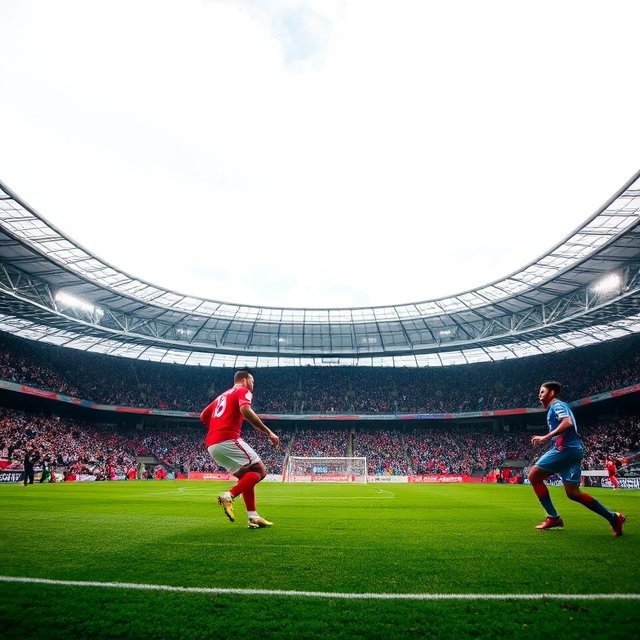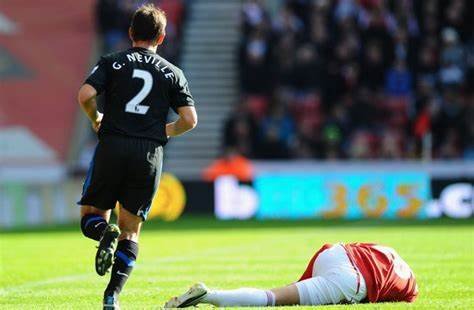The League 2 table is an essential fixture in English football, offering insight into the standings, performances, and prospects of the teams competing for promotion and survival. As the fourth tier of the English Football League (EFL), League 2 holds particular importance for clubs striving to move up to the higher divisions. Whether you are a dedicated fan, a sports analyst, or just curious about the competition, understanding the League 2 table is crucial for staying updated on the latest developments in English football.
In this article, we will take an in-depth look at the League 2 table, its significance, how it works, and answer the most popular questions people have been asking. We will also explore the factors influencing the standings and predictions for the season ahead.
What is the League 2 Table?
The League 2 table represents the ranking of all the clubs competing in League 2, which is the fourth tier of English football. It consists of 24 teams that play a total of 46 matches each season. The position of each team in the table is determined by their performance in these matches, with points awarded for wins, draws, and losses. The league operates on a points system, where:
3 points are awarded for a win
1 point for a draw
0 points for a loss
The team with the most points at the end of the season is crowned the League 2 champion and is automatically promoted to League 1, the next tier. The teams finishing in 2nd to 7th place enter the playoffs to compete for the third promotion spot.
The Structure of the League 2 Table
The League 2 table is divided into two key sections: the promotion zone and the relegation zone.
Promotion Zone
The top three teams in the table automatically secure promotion to League 1. These teams achieve their promotion based on their consistent performance throughout the season.
Playoffs
The teams finishing in 4th to 7th place are given the opportunity to fight for promotion through the playoffs. This is a series of knockout games, with the winner of the final match earning the final promotion spot.
Relegation Zone
The bottom two teams of the League 2 table face relegation to the National League, the fifth tier of English football. These teams drop out of the league system, and new teams from the lower divisions are promoted in their place.
How Does the League 2 Table Impact Teams?
The League 2 table is not just a reflection of the standings; it also has a significant impact on the future of the clubs. Teams at the top of the table are striving for promotion, while those at the bottom are fighting to avoid relegation. This dynamic creates intense competition, particularly as the season draws to a close.
For clubs at the top, finishing in the top three is a dream come true, offering a chance to climb the ladder of English football. It brings financial benefits, as teams in higher leagues enjoy better television deals, larger stadium attendances, and a more prestigious reputation.
On the other hand, teams at the bottom are in a race against time to secure survival. Relegation to the National League not only affects a team’s financial standing but also its long-term development and fanbase. A drop in divisions often leads to fewer resources, less visibility, and challenges in attracting talent.
Key Factors Affecting the League 2 Table
Several factors can influence the standings in the League 2 table, from team form and player performances to injuries and managerial changes. Here are some of the main elements that affect the League 2 table:
Team Form and Consistency
The most obvious factor is the form of the teams throughout the season. A club’s ability to maintain consistency in their results – especially in away matches – is crucial. Teams that struggle to pick up points at home or in difficult fixtures often find themselves at the lower end of the table.

Goal Difference
In the event that two or more teams finish the season with the same number of points, the League 2 table uses goal difference as a tiebreaker. This means that teams who score more goals and concede fewer goals will rank higher, even if their points tally is the same.
Squad Strength and Injuries
The quality of a team’s squad is vital to their performance. Clubs with deep, talented squads are better equipped to handle the physical demands of the season. Injuries to key players, however, can significantly impact a team’s position in the table.
Managerial Decisions
Managers play a pivotal role in the direction of the team. Their tactical approach, player selections, and overall leadership are often reflected in the team’s results. A managerial change during the season can alter the course of a team’s campaign, for better or worse.
Fixtures and Schedule
The timing and difficulty of fixtures also influence the standings. Teams that face a run of tough opponents may see their position slip, while teams with an easier run of matches may find themselves climbing the table.
Analyzing the Top Teams in the League 2 Table
The League 2 table often features a mix of traditional clubs and smaller teams that have risen to the occasion. While promotion is the primary goal for these teams, the competition for the top spots can be fierce.
Top Performers
Clubs that perform consistently well in League 2 often have a strong tactical setup, a good blend of youth and experience, and a loyal fanbase. Teams that have historically competed in higher divisions are often strong contenders for promotion, but clubs with good management and financial backing can also rise through the ranks.
Dark Horses
There are also teams that, despite not having the financial power or historical pedigree, rise to prominence through hard work, strategic recruitment, and efficient management. These “dark horse” clubs can cause upsets and break into the top spots unexpectedly.
The Playoff Race in the League 2 Table
For clubs finishing between 4th and 7th place, the playoffs provide an additional chance at promotion. The League 2 playoffs are highly anticipated, with games that generate immense excitement and drama. The playoff format typically involves:
4th place vs. 7th place
5th place vs. 6th place
The winners of these two matches meet in a final, with the winner securing a place in League 1 for the next season. This playoff battle offers a final opportunity for teams that have not secured automatic promotion but are still capable of making the jump to the next tier.
The Relegation Fight in the League 2 Table
At the opposite end of the table, the battle against relegation is equally compelling. Teams fighting for survival in League 2 must focus on picking up points in every match, especially against direct rivals.
Relegation Scenarios
Relegation can significantly affect a club’s financial position, especially for smaller teams who might depend on league income for survival. Teams that struggle for form and cannot secure enough points are at risk of falling into the bottom two spots, which results in relegation to the National League.
The Fight for Safety
Clubs near the relegation zone are often involved in tense, high-stakes matches as they fight for survival. Every point becomes critical as the season progresses, and teams often change tactics or make last-minute signings to improve their chances of staying in the league.
The Impact of Fan Support in the League 2 Table
While the performance on the pitch is the most significant factor in determining a team’s position, fan support also plays a crucial role. A passionate fanbase can inspire players and provide the team with the morale boost needed to perform under pressure.
Home Advantage
Playing at home can offer a significant advantage for teams, with familiar surroundings and the support of home fans boosting team morale. Clubs that have a strong home record are often better positioned in the table, while away form can be a challenge for others.
FAQs
What is the current League 2 table?
The League 2 table reflects the standings of teams in the fourth tier of English football. It ranks teams based on points earned through wins, draws, and losses. As of the latest update, teams at the top are in the promotion zone, aiming for a move up to League 1, while those at the bottom are fighting relegation to the National League.
How are points calculated in the League 2 table?
In the League 2 table, teams earn 3 points for a win, 1 point for a draw, and 0 points for a loss. The number of points accumulated throughout the season determines a team’s position. If two teams are level on points, goal difference and goals scored are used as tie-breakers.
Which teams are leading the League 2 table right now?
The top spots in League 2 are often highly competitive, with teams vying for promotion to higher leagues. As of the most recent update, teams like Stevenage, Barrow, and Carlisle United have been among the top contenders, pushing to secure their places in the automatic promotion spots.
How many teams get promoted from League 2?
The top three teams in the League 2 table at the end of the season are automatically promoted to League 1. The team finishing fourth to seventh competes in the playoffs for the fourth promotion spot, which adds an extra level of excitement to the league.
Who is at risk of relegation in League 2?
The teams that finish in the bottom two positions of the League 2 table are relegated to the National League. However, the third-from-bottom team has a chance to stay in League 2 through a relegation playoff against a team from the National League.
Final Thought
The League 2 table is more than just a snapshot of the standings; it reflects the ambitions, challenges, and journey of clubs at the fourth tier of English football. Every season, teams fight tooth and nail for promotion to League 1, while others scramble to avoid relegation. Understanding the dynamics of the League 2 table gives fans and analysts alike a deeper appreciation for the competition. Whether it’s a team’s rise from obscurity or the intense battles for survival, the League 2 table remains a thrilling representation of the ever-changing world of English football.
To read more; Click here



